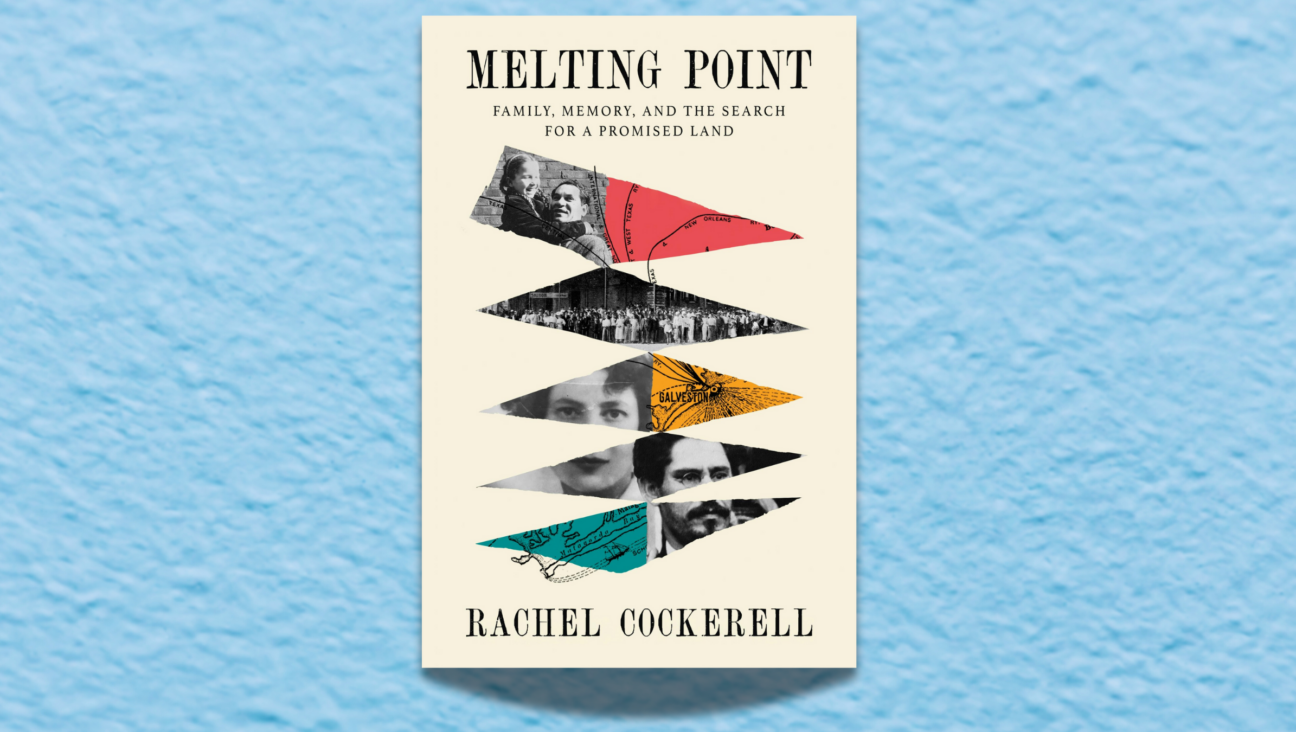Books Aren’t Born: Writing and Gestating Just Aren’t Comparable
My son, Shai, was born on January 21, 2007 and two days later, in time for our arrival home from the hospital, a heavy cardboard box arrived in the mail. University of Nebraska Press had sent me 20 copies of my first book, “Houses Of Study: A Jewish Woman Among Books,” which I had been writing for much of my adult life. Here it was, in hardcover. My first thought was to give one as a gift to our friend Alicia, who had served as our doula at our daughter’s birth in 2004, and had attended Shai’s birth as well.
How connected the book was to birth — its last section seemed unwritable until I had given birth to my first child, Priya, and had learned to be a mother to her. Getting married to Ori helped the book along, but having a child seemed like the natural conclusion to years of mulling, living and writing. We write books to those living next to us, breathing our air with us, but we write and we read, also, to imagine that messages travel down through the generations.
Here was my book, which had been waiting for a baby to be born to be ended and, apparently, had been waiting for another baby to arrive to begin circulating.
And yet: A book is so different than a child.
For hundreds of years, male authors have compared books to babies; writing to gestation and pregnancy; publication to the sending out of children into the world. Philip Sidney, for instance, opened his great sonnet sequence “Astrophel and Stella,” by complaining that he was “great with child to speak, and helpless in my throes,/Biting my truant pen, beating myself for spite.”
But the two — the baby and the book — are not the same. I can say this as a mother who is a writer, and as a writer who became a mother.
When I saw my first book in print, I thought, “So now that’s done!” I admit there was some degree of revelation in opening it, in re-reading what was so familiar and imagining how others, who had never seen it in handwriting or across a computer screen might hear it, but it was so familiar. I felt sure I must know parts of it by heart. Between two covers, order prevailed; all struggle was over. True, I did not know what its fate in the world would be, but I was done with this book. It was known. I did not fear for its health or its survival. I was not even all that interested in it. It felt like the past.
I sat in my gently creaking rocking chair, one copy of my book in one hand, Shai asleep against my other arm, and he was all mystery. His little face looked much like my brother’s, no doubt, and would come to look like my father’s and my own, and later still, his sister’s and father’s; in short, the past would catch up with us and he would seem connected not only to the unknown future but to the inheritance of worlds and histories. But this little baby in his blue one-piece sleeper suit, he was not mine. Not the object of my craft. I’d hosted him, no doubt, for a good, long 39 weeks. I’d carried him about — all nine pounds, 22 inches of him. I’d “worked on” him, so to speak, eating what was good for him, I hoped, and avoiding what might harm him. I’d prayed. And that was where the analogy stopped.
Labor was difficult, which was why I thought of the book as a gift for our friend and doula, who had helped see me and Ori through. And as all women who’ve given birth know, there is no going back once you’re that far. What had been one — my baby inside me — was becoming two. My book and I had always been two, despite the book’s being about my own life. Yes, we were a close two, but I’d known from the outset that the story I told about myself bore only limited relation to the life I had lived. We were separate.
And here, with Shai on my arm, Priya upstairs with Ori, I was in the midst of figuring out something quite different from the processes of addition that are the special conundrums of writing and marriage. I was at work on the processes of subdivision. Real subdivision when one becomes two or three or more — and the two or three or more are separate, distinct and finally uncontrollable. Now this is true about the books we write and the people we marry, but the difference for me was that that truth about books and a spouse did not come as a shock. With my children, I have found it more challenging, more painful and more bracing. How, for a lifetime, we submit to the mystery, the surprising difficulty, of another human being alongside us, against us, but never again inside us, encompassed without alternative. We give up.
Here was Shai, a child my husband and I loved, were responsible for, would seek always to protect and teach, and yet could not claim. Would never be able to say, “Now that’s done,” would never see as the past, would never lose interest in, would never “have written” and would watch, always, passionately, with curiosity.
Ilana Blumberg is the author of “Houses of Study: a Jewish Woman among Books” (Bison Books, 2009), winner of the Sami Rohr Choice Award 2008. She was a runner-up for the National Jewish Book Award in Women’s Studies and the Moment Magazine Emerging Writer Award. She teaches humanities and Jewish studies at Michigan State University.
The Forward is free to read, but it isn’t free to produce

I hope you appreciated this article. Before you go, I’d like to ask you to please support the Forward.
Now more than ever, American Jews need independent news they can trust, with reporting driven by truth, not ideology. We serve you, not any ideological agenda.
At a time when other newsrooms are closing or cutting back, the Forward has removed its paywall and invested additional resources to report on the ground from Israel and around the U.S. on the impact of the war, rising antisemitism and polarized discourse.
This is a great time to support independent Jewish journalism you rely on. Make a gift today!
— Rachel Fishman Feddersen, Publisher and CEO
Support our mission to tell the Jewish story fully and fairly.
Most Popular
- 1

Culture Cardinals are Catholic, not Jewish — so why do they all wear yarmulkes?
- 2

Fast Forward Ye debuts ‘Heil Hitler’ music video that includes a sample of a Hitler speech
- 3

News School Israel trip turns ‘terrifying’ for LA students attacked by Israeli teens
- 4

Fast Forward Student suspended for ‘F— the Jews’ video defends himself on antisemitic podcast
In Case You Missed It
-

Yiddish קאָנצערט לכּבֿוד דעם ייִדישן שרײַבער און רעדאַקטאָר באָריס סאַנדלערConcert honoring Yiddish writer and editor Boris Sandler
דער בעל־שׂימחה האָט יאָרן לאַנג געדינט ווי דער רעדאַקטאָר פֿונעם ייִדישן פֿאָרווערטס.
-

Fast Forward Trump’s new pick for surgeon general blames the Nazis for pesticides on our food
-

Fast Forward Jewish feud over Trump escalates with open letter in The New York Times
-

Fast Forward First American pope, Leo XIV, studied under a leader in Jewish-Catholic relations
-
Shop the Forward Store
100% of profits support our journalism
Republish This Story
Please read before republishing
We’re happy to make this story available to republish for free, unless it originated with JTA, Haaretz or another publication (as indicated on the article) and as long as you follow our guidelines.
You must comply with the following:
- Credit the Forward
- Retain our pixel
- Preserve our canonical link in Google search
- Add a noindex tag in Google search
See our full guidelines for more information, and this guide for detail about canonical URLs.
To republish, copy the HTML by clicking on the yellow button to the right; it includes our tracking pixel, all paragraph styles and hyperlinks, the author byline and credit to the Forward. It does not include images; to avoid copyright violations, you must add them manually, following our guidelines. Please email us at [email protected], subject line “republish,” with any questions or to let us know what stories you’re picking up.















